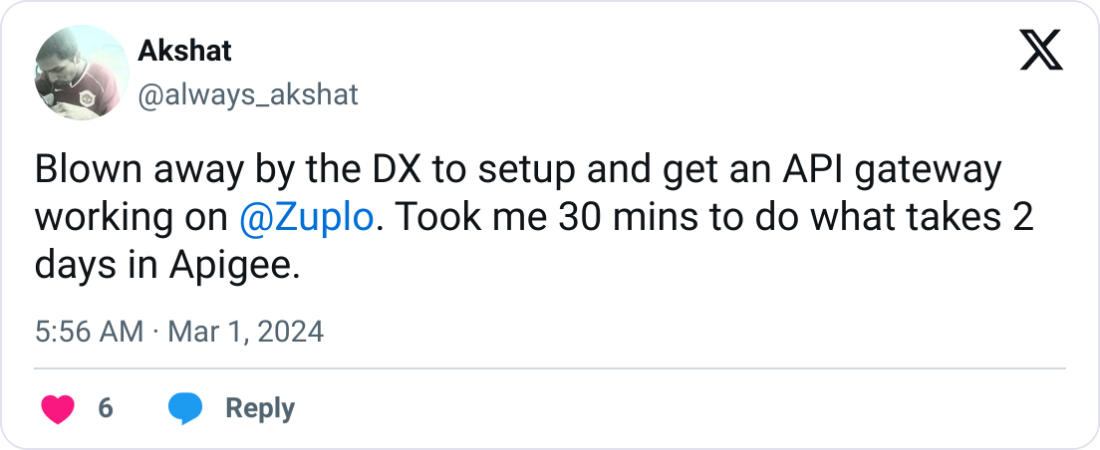API hosting isn't just a technical decision—it's a strategic business choice that directly impacts your organization's success. As APIs become the backbone of digital experiences, your hosting solution can determine whether your business thrives or merely survives.
Your API hosting directly affects scalability (handling sudden traffic spikes), security (protecting against vulnerabilities), and performance (ensuring speed and reliability). Choose wisely, and you'll empower your API strategy; choose poorly, and you'll constrain your business growth. Let's explore how to make this critical decision with confidence.
- Why Your API Hosting Choice Can Make or Break Your Business
- The API Hosting Battlefield: Which Solution Wins for Your Needs?
- What Engineers Need to Know About Hosting: The Technical Nuts and Bolts
- Beyond Tech: The Business Case for Your API Hosting Choice
- Your Roadmap to Picking the Perfect API Hosting Solution
- Making the Optimal API Hosting Choice
Why Your API Hosting Choice Can Make or Break Your Business#
Choosing the right API hosting solution isn't something you can wing. You need to start by understanding exactly what you need, or you'll be paying for it later (literally and figuratively). 👀
Assessing Current and Future Infrastructure Needs#
Start by analyzing your current API usage patterns while anticipating future growth:
- Traffic patterns: What volume of API calls do you expect? Will there be predictable usage or sudden traffic spikes?
- Geographic distribution: Will your API serve users globally or in specific regions? This impacts latency considerations and data residency requirements.
- Performance expectations: What are your latency requirements? High-frequency trading APIs have different needs than background data synchronization.
- Scalability requirements: How quickly do you expect your API usage to grow? Cloud-based solutions can handle rapid scaling with ease.
When considering future needs, look beyond immediate requirements. Ask yourself: "Where will our API infrastructure be in 2-3 years?" Anticipating growth can help you avoid costly migrations later.
Evaluating Technical Constraints and Capabilities#
An honest assessment of your organization's technical capabilities is essential when deciding whether to build vs buy your API management tools:
- In-house expertise: Do you have the technical team to manage complex API infrastructure? Self-hosted solutions require substantial infrastructure preparation, including server provisioning, load balancing configuration, and ensuring high availability through redundancy.
- Security requirements: What authentication, authorization, and encryption needs do you have? SOC 2, HIPAA, or PCI-DSS compliance requirements will significantly impact your hosting choices.
- Integration needs: How will your API connect to existing systems? Consider the compatibility with your current databases, backend services, and development tools.
- Monitoring capabilities: Do you have the tools and expertise to monitor API performance, detect issues, and troubleshoot problems?
Remember that what works for large enterprises with dedicated DevOps teams may not be appropriate for smaller organizations with limited technical resources.
Aligning Your Hosting Choice with Your Business Goals#
Your API hosting decision should directly support broader business objectives and your API business model:
- Time-to-market requirements: How quickly do you need to deploy? Cloud-based and serverless solutions typically offer faster deployment compared to building self-hosted infrastructure.
- Budget constraints: What's your budget for initial setup versus ongoing operations? Cloud-based solutions often reduce upfront costs but may become expensive at high volumes.
- Growth projections: How will your API hosting scale with business growth? Consider both technical scaling and cost scaling as your usage increases.
- Risk tolerance: What's your organization's tolerance for downtime or performance issues? This affects the redundancy and reliability requirements of your hosting solution.
Ask yourself: "Is our primary goal cost optimization, maximum control, rapid deployment, or something else?" Your answer should guide your hosting decision.
The API Hosting Battlefield: Which Solution Wins for Your Needs?#
When it comes to hosting your APIs, the landscape offers several distinct API gateway hosting options, each with its own set of benefits and limitations. Let's dive into the nitty-gritty of what each option brings to the table—because your API deserves better than a one-size-fits-all approach.
Cloud-Based API Hosting#
Cloud-based API hosting leverages the infrastructure of major cloud providers like AWS, Azure, and Google Cloud Platform to deploy and manage your APIs using a cloud-hosted API gateway.
Strengths:
- Exceptional scalability that can handle traffic fluctuations with minimal manual intervention
- Global data center networks that reduce latency for users worldwide
- Robust security features including built-in firewalls, encryption, and identity management
- Comprehensive monitoring and analytics capabilities
- Managed services that reduce operational overhead
Limitations:
- Potential for vendor lock-in with proprietary systems and services
- Costs can escalate quickly with increasing traffic
- Less control over the underlying infrastructure
- Possible multi-tenancy issues affecting performance

Over 10,000 developers trust Zuplo to secure, document, and monetize their APIs
Learn MoreCost Structure:
Cloud-based hosting typically follows a pay-as-you-go model. For example, Kamatera's cloud-based API hosting starts at approximately $0.005 per hour, while Amazon's API Gateway charges based on the number of API calls and data transfer. It's worth comparing different providers to find the solution that best suits your needs.
Ideal For:
Organizations with variable workloads, global reach requirements, or those lacking the infrastructure and expertise to manage their own hosting environment.
Self-Hosted Solutions#
Self-hosted API solutions involve deploying APIs on your own infrastructure, either on-premises or in rented data center space.
Strengths:
- Complete control over hardware, software, and security configurations
- No multi-tenancy issues that can impact cloud performance
- Potential for performance optimization specific to your APIs
- Data sovereignty with clear knowledge of where data resides
- No dependency on external service providers
Limitations:
- Significant upfront investment in hardware and software
- Challenging to scale quickly in response to demand spikes
- Requires specialized expertise for management and maintenance
- Responsibility for security and compliance falls entirely on your team
Cost Structure:
Self-hosted solutions typically involve high upfront costs for hardware, software, and setup, followed by ongoing expenses for maintenance, upgrades, power, cooling, and staff. While individual API calls don't incur additional charges, the fixed costs remain regardless of usage levels.
Ideal For:
Organizations with strict data residency requirements, predictable and steady API traffic, existing data center investments, or sufficient in-house expertise.
API-as-a-Service (APIaaS) Platforms#
API-as-a-Service platforms provide end-to-end solutions for API hosting, management, and monetization.
Strengths:
- Simplified deployment and management with purpose-built tools
- Built-in features for developer portals, documentation, and onboarding
- Integrated analytics and monitoring capabilities
- Pre-configured security features like API key management and rate limiting
- Easy scaling without infrastructure concerns
Limitations:
- Less flexibility for customization than self-hosted options
- Potential for higher costs at scale
- Dependency on the platform provider for critical functionality
- May not integrate seamlessly with all existing systems
Cost Structure:
APIaaS platforms typically charge based on API call volume and data transfer. RapidAPI's pricing starts at $0.20/GB for data transfer and $0.50 per million API calls, making it cost-effective for low to moderate traffic but potentially expensive at high volumes.
Ideal For:
Organizations looking to quickly launch APIs without infrastructure management overhead, businesses wanting to monetize their APIs, or teams with limited API management expertise.
Serverless API Hosting#
Serverless platforms like AWS Lambda, Azure Functions, and Google Cloud Functions allow you to run API code without managing servers.
Strengths:
- Near-infinite scalability with platforms like AWS Lambda handling over 100,000 events per second
- Pay-only-for-what-you-use pricing model
- Zero infrastructure management overhead
- Automatic high availability and fault tolerance
- Simplified deployment through continuous integration pipelines
Limitations:
- Cold start latency for infrequently accessed APIs
- Limited execution duration (typically up to 15 minutes)
- Debugging and monitoring can be more challenging
- Less control over the runtime environment
- Potential for higher costs with consistently high traffic
Cost Structure:
Serverless pricing is function-based rather than server-based. This makes it extremely cost-effective for sporadic workloads but can become expensive for high-volume, long-running functions.
Ideal For:
APIs with variable or unpredictable traffic patterns, microservices architectures, or organizations looking to minimize operational overhead.
When selecting an API hosting solution, your organization's specific requirements should guide the decision. Consider factors like expected traffic patterns, budget constraints, existing infrastructure investments, compliance requirements, and in-house expertise. Many organizations are finding success with hybrid approaches, using different hosting models for different types of APIs based on their individual characteristics and requirements.
What Engineers Need to Know About Hosting: The Technical Nuts and Bolts#

When selecting an API hosting solution, several technical factors significantly impact performance, security, and overall success. Digging deeply into these aspects before making a decision can prevent costly mistakes down the road.
Don't just skim the surface here—these technical considerations will make or break your API strategy. Trust us, you'll want to get this right the first time. 💯
Scalability and Performance Strategies#
Your API hosting solution must effectively handle varying loads while maintaining consistent performance. This becomes particularly critical as your user base grows or during traffic spikes.
Cloud-based solutions typically excel in this area, with providers like Kamatera offering "rapid response times while maintaining a 99.95% uptime guarantee." When evaluating scalability options, ask potential providers:
- What auto-scaling capabilities are available to handle unexpected traffic spikes?
- How does the platform balance loads across multiple instances?
- What caching mechanisms are implemented to optimize performance?
- How does the architecture support horizontal vs. vertical scaling?
Implementing a robust caching strategy is essential to enhance API performance. Consider where caching should occur (client-side, edge, or server-side) and which resources benefit most from caching. Additionally, applying API rate limiting can help manage traffic loads and ensure fair usage across clients.
For serverless deployments, understand how the platform handles cold starts. AWS Lambda can scale to handle over 100,000 events per second, but you'll need to evaluate whether potential latency from cold starts affects your particular use case.
Security Architecture and Requirements#
While ensuring your API can scale is crucial, equally important is implementing a robust security architecture by following API security best practices. In 2024, 95% of organizations reported security issues in their production APIs, underscoring the critical importance of comprehensive security measures.
When evaluating API hosting solutions, probe deeply into these security aspects:
- Authentication and Authorization: What authentication mechanisms are supported, such as API key authentication, OAuth 2.0, or JWT? Does the platform enable granular permission controls?
- Encryption: How is data protected both in transit and at rest?
- Threat Protection: What measures exist for preventing injection attacks, DDoS attacks, and other common API vulnerabilities? Does the platform support features like API key leak prevention?
- Regulatory Compliance: Does the solution support your specific compliance needs (SOC 2, HIPAA, PCI-DSS)?
As the DoD API Technical Guidance notes, "Since the API gateway is the primary component to effective API implementation, management, and security, it should be equipped with infrastructure services appropriate to mitigate the growing list of threats."
For regulated industries, compliance requirements significantly influence hosting decisions. A healthcare application leveraged API management to meet HIPAA compliance by enforcing strict access controls, implementing data masking for sensitive information, and providing comprehensive audit logging of all API interactions.
Reliability and Availability Engineering#
A secure API is only valuable if it's also consistently available. Reliability engineering should be central to your hosting evaluation process.
Key considerations include:
- Service Level Agreements (SLAs): What uptime guarantees does the provider offer? How do these align with your business requirements?
- Fault Tolerance: How does the platform handle component failures? Are there automatic failover mechanisms?
- Disaster Recovery: What backup and recovery processes exist? How frequently are backups performed?
- Geographic Distribution: Can you deploy across multiple regions to improve availability and reduce latency?
Reliability engineering also involves establishing robust observability practices. This includes implementing comprehensive logging, monitoring, and tracing across your API infrastructure to quickly identify and resolve issues before they impact users.
Developer Experience and Tooling Ecosystem#
Reliability creates the foundation for a positive developer experience, which is crucial for API adoption and efficient operations. The tooling ecosystem surrounding your API hosting solution significantly impacts developer productivity and satisfaction.
Key aspects to evaluate include:
- Documentation Generation: Does the platform support automated API documentation through standards like OpenAPI/Swagger?
- Testing Capabilities: What tools are available for automated testing, including functional, load, and security testing?
- Deployment Automation: How well does the solution integrate with CI/CD pipelines? What deployment options are available?
- Monitoring and Debugging: What tools exist for troubleshooting and performance analysis?
The quality of API management tools can dramatically affect development velocity. Look for solutions that provide clear visibility into API usage patterns, error rates, and performance metrics, enabling your team to continuously improve the API experience.
Beyond Tech: The Business Case for Your API Hosting Choice#
When selecting an API hosting solution, technical specifications are just one piece of the puzzle. The business and operational aspects can significantly impact the long-term success of your implementation.
We've seen too many companies focus exclusively on technical specs only to get blindsided by operational realities. Don't make that rookie mistake! 🚫
Total Cost of Ownership Analysis#
Understanding the true cost of an API hosting solution requires looking beyond the initial price tag. Total Cost of Ownership (TCO) encompasses all expenses associated with acquiring, deploying, and maintaining your solution throughout its lifecycle.
When calculating TCO, consider:
- Initial setup costs (software licenses, hardware, implementation)
- Ongoing operational expenses (hosting, maintenance, upgrades)
- Support and personnel costs
- Training and knowledge transfer expenses
- Migration and integration expenses
For perspective, an enterprise content management system may have an initial setup cost of approximately $350,000, but the ongoing maintenance can significantly increase the TCO over time. For example, a company anticipating $100,000 in annual expenses for the first three years, increasing to $110,000 and $121,000 in subsequent years, might face a total TCO of around $1.45 million over 10 years—translating to an annual TCO of $145,300.
Vendor Lock-in Risk Assessment#
Vendor lock-in occurs when switching to another hosting provider becomes prohibitively expensive or complex. This dependency can limit your flexibility and potentially expose you to price increases or service changes.
Key factors contributing to vendor lock-in include:
- Proprietary technologies and protocols
- Custom integrations specific to a vendor's platform
- Contract terms with high exit barriers
- Data migration challenges
To mitigate these risks, consider these strategies:
- Prioritize solutions that use open standards and protocols
- Implement abstraction layers between your applications and the API hosting platform
- Negotiate favorable exit terms in your contracts
- Develop a clear exit strategy before committing to a vendor
Many organizations are adopting hybrid approaches to reduce vendor lock-in. For example, some companies run applications on dedicated servers while backing up data with public cloud services, balancing compliance requirements with flexibility and cost predictability.
Support Quality and Service Level Evaluations#
The quality of vendor support can significantly impact your operational efficiency, especially during critical incidents. Before selecting an API hosting solution, thoroughly assess:
- Support availability (24/7 vs. business hours)
- Response time guarantees for different severity levels
- Escalation procedures for unresolved issues
- Communication channels (phone, email, chat, dedicated account manager)
- Documentation quality and knowledge base resources
Beyond standard SLAs, investigate the vendor's actual performance by requesting references from existing customers, reading third-party reviews, and testing support responsiveness during the evaluation period.
Integration with Your Existing Ecosystem#
Your API hosting solution doesn't exist in isolation—it must work seamlessly with your existing technology stack. Consider how well it integrates with:
- Current development workflows and CI/CD pipelines
- Security infrastructure and identity management systems
- Monitoring and analytics tools
- Data storage and processing systems
- Legacy systems and applications
When evaluating integration capabilities, map out all required integration points, conduct proof-of-concept testing for critical integrations, and evaluate the availability of pre-built connectors versus custom development needs.
Your Roadmap to Picking the Perfect API Hosting Solution#

Choosing the right API hosting solution involves balancing technical needs and business constraints. Here's a streamlined approach to help you make the right decision—whether you're considering cloud, self-hosted, or serverless options.
Prioritize Your Requirements#
Start by creating a list of technical (performance, security, scalability) and business (budget, compliance) requirements. Assign weights to each requirement:
- Must-have: 5 points
- Should-have: 3 points
- Nice-to-have: 1 point
Then, use a decision matrix to score potential solutions, multiplying ratings by requirement weights for data-driven choices. Identify any non-negotiable requirements (e.g., compliance) upfront to guide your decision.
Future-Proofing Your API Hosting Choice#
Consider long-term viability when selecting an API host:
- Vendor roadmaps: Look at the solution’s development trajectory.
- Ecosystem: A strong developer community ensures smoother evolution.
- API gateway abstraction: This can lower future switching costs.
- Growth: Plan for scalability—cloud solutions like AWS API Gateway or Lambda can scale massively.
Netflix's migration to AWS improved API latency by 50% and managed traffic spikes, though the process took over two years.
Implementation and Migration#
After selecting a hosting solution, plan your migration carefully:
- Phased approach: Start with non-critical APIs, then gradually migrate more.
- Success metrics: Track performance, cost savings, productivity, and maintenance reductions.
- Timeline: Develop a realistic schedule with contingency buffers.
- Rollback strategy: Always have a fallback plan if issues arise.
- Knowledge transfer: Ensure your team gets proper training and documentation.
Making the Optimal API Hosting Choice#
Selecting the right API hosting solution is a critical decision that can significantly impact your organization's technical capabilities and business outcomes. There's no universal solution that works for every organization—your optimal choice depends on your specific needs, constraints, and goals.
With the right hosting choice, your APIs can become more than just technical interfaces—they can be a powerful competitive advantage that enables innovation, improves customer experiences, and opens new business opportunities. Ready to transform your API hosting strategy? Create your Zuplo account today — it’s free.